
Progress in Additive Manufacturing
Scope & Guideline
Exploring Cutting-Edge Solutions in Additive Manufacturing.
Introduction
Aims and Scopes
- Innovative Materials for Additive Manufacturing:
Research on new materials, including metals, polymers, and composites, specifically designed for additive manufacturing processes to enhance mechanical properties and application performance. - Process Optimization and Characterization:
Studies focused on optimizing additive manufacturing processes, including laser powder bed fusion, material extrusion, and binder jetting to improve efficiency, reduce defects, and enhance product quality. - Multiscale Modelling and Simulation:
Utilization of numerical models and simulations to predict material behavior, thermal dynamics, and mechanical performance in additive manufacturing, facilitating better design and process control. - Interdisciplinary Applications of Additive Manufacturing:
Exploration of diverse applications of AM technologies in fields such as aerospace, automotive, biomedical, and construction, highlighting innovative use cases and their implications. - Sustainability and Environmental Impact:
Research addressing the sustainability of additive manufacturing processes, including waste reduction, energy consumption, and lifecycle analysis of AM materials and products.
Trending and Emerging
- Integration of Machine Learning and AI in AM:
A growing trend in utilizing machine learning and artificial intelligence to optimize additive manufacturing processes, predict outcomes, and enhance quality control through data-driven approaches. - Advanced Functional Materials:
Increased focus on developing advanced materials, such as composites and biomaterials, specifically engineered for additive manufacturing to meet specific mechanical, thermal, or functional requirements. - 4D Printing and Smart Materials:
Emerging research in 4D printing technologies, which involve materials that can change shape or function over time in response to environmental stimuli, showcasing innovative applications in biomedical and aerospace fields. - Hybrid Manufacturing Techniques:
The rise of hybrid approaches that combine additive manufacturing with traditional manufacturing techniques, allowing for more complex geometries and improved material properties. - Sustainability in Additive Manufacturing:
An increasing emphasis on sustainable practices within additive manufacturing, including recycling of materials, energy-efficient processes, and the environmental impact of AM technologies.
Declining or Waning
- Traditional Manufacturing Comparisons:
Research comparing additive manufacturing techniques to traditional manufacturing methods, which has decreased as the industry increasingly recognizes the unique benefits of AM, reducing the need for direct comparisons. - Basic Additive Manufacturing Techniques:
Studies focusing on fundamental or introductory aspects of additive manufacturing processes have waned, as the field matures and more advanced, specific applications and innovative techniques take precedence. - Non-Specialized Material Studies:
Investigations into generic materials without specific application contexts or advanced modifications are becoming less common, as the focus shifts towards specialized materials that enhance performance for particular applications.
Similar Journals
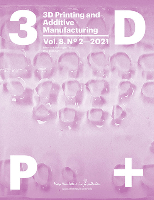
3D Printing and Additive Manufacturing
Navigating the New Frontier of Materials Science3D Printing and Additive Manufacturing, published by MARY ANN LIEBERT, INC, stands at the forefront of innovation in the realms of manufacturing and materials science. With an ISSN of 2329-7662 and E-ISSN 2329-7670, this journal provides a critical platform for researchers, professionals, and students to explore the latest advancements and applications of additive manufacturing technologies. Since its inception in 2014, the journal has rapidly gained recognition, currently holding a reputable Q2 classification in both Industrial and Manufacturing Engineering and Materials Science categories, as reflected in its 2023 Scopus Rankings. It is noted for its insightful peer-reviewed articles that cover a diverse range of topics including design methodologies, materials performance, and sustainability in 3D printing. Although not open access, the journal's readership is expanding, backed by its significant contributions to the field amidst evolving industrial landscapes.
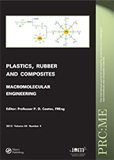
PLASTICS RUBBER AND COMPOSITES
Transforming Ideas into Advanced Material SolutionsPLASTICS RUBBER AND COMPOSITES is a leading academic journal published by SAGE Publications Inc., dedicated to advancing the understanding and application of polymers, plastics, and composite materials. With an ISSN of 1465-8011 and an E-ISSN of 1743-2898, this quarterly publication attracts a diverse readership from the fields of ceramics and composites, chemical engineering, materials chemistry, and polymer science. Currently indexed in the Q3 category across multiple relevant domains, the journal provides a platform for high-quality research and innovations that contribute significantly to material science. The journal's commitment to disseminating cutting-edge research makes it a valuable resource for researchers, industry professionals, and students who are eager to explore the latest developments and applications in this dynamic field. Despite its current non-open access status, the journal's rigorous peer-review process ensures that all published articles meet the highest academic standards, thus reinforcing its reputation as an essential source for scholarly work in the materials sector.

Advances in Manufacturing
Exploring the Future of Industrial EngineeringAdvances in Manufacturing, published by Springer, is a premier journal dedicated to the evolving fields of Industrial and Manufacturing Engineering, Mechanical Engineering, Mechanics of Materials, and Polymers and Plastics. With an impact factor placing it in the Q1 category across multiple disciplines for the year 2023, this journal serves as a vital platform for disseminating cutting-edge research and insights that drive innovation in manufacturing practices. The journal is renowned for its rigorous peer-review process, ensuring that only high-quality studies contribute to the body of knowledge. Spanning the years from 2013 to 2024, it not only publishes papers that advance theoretical frameworks but also those that explore practical applications and case studies in the manufacturing sector. Researchers, industry professionals, and students will find invaluable resources within its pages, fostering collaboration and knowledge exchange within the manufacturing community. This journal is based in the United States, located at One New York Plaza, Suite 4600, New York, NY 10004, and is accessible through various institutional subscriptions.

STROJNISKI VESTNIK-JOURNAL OF MECHANICAL ENGINEERING
Championing Peer-Reviewed Insights in MechanicsSTROJNISKI VESTNIK-JOURNAL OF MECHANICAL ENGINEERING is a prestigious publication that has been disseminating cutting-edge research in the field of mechanical engineering since 1974. Published by the Association of Mechanical Engineers Technicians Slovenia, this journal serves as a critical platform for professionals, researchers, and students aiming to explore advancements in mechanical engineering and mechanics of materials. With a category ranking in the Q3 quartile for both Mechanical Engineering and Mechanics of Materials, the journal reflects a robust engagement with contemporary research and practices, contributing to the ongoing discourse within these vital disciplines. Although currently not open access, the journal is committed to providing high-quality, peer-reviewed articles that facilitate knowledge sharing and innovation. It is indexed in Scopus, maintaining respectable standings within its categories, thereby underlining its importance and impact in the global academic community.
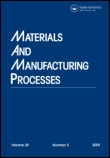
MATERIALS AND MANUFACTURING PROCESSES
Advancing the Frontiers of Materials Science and Manufacturing Engineering.MATERIALS AND MANUFACTURING PROCESSES, published by Taylor & Francis Inc, is a leading journal dedicated to the dynamic fields of materials science and manufacturing engineering. Established in 1989, the journal has built a formidable reputation, exemplified by its prestigious Q1 rankings in 2023 across various categories, including Industrial and Manufacturing Engineering, Materials Science, Mechanical Engineering, and Mechanics of Materials. With a robust focus on innovative research and the latest advancements in manufacturing techniques and materials application, the journal serves as a vital resource for researchers, professionals, and students alike. The journal is indexed in renowned databases and boasts high impact factors, reflecting its influence in the academic community. Although it does not offer open access, it provides extensive platforms for disseminating crucial findings that push the boundaries of engineering and science. For those seeking impactful research contributions, MATERIALS AND MANUFACTURING PROCESSES remains at the forefront of fostering scholarly dialogue and advancing the field.

JOURNAL OF MATERIALS ENGINEERING AND PERFORMANCE
Pioneering Research in Materials EngineeringJOURNAL OF MATERIALS ENGINEERING AND PERFORMANCE, published by Springer, serves as a vital resource for researchers and professionals in the fields of materials science, mechanical engineering, and mechanics of materials. With an ISSN of 1059-9495 and E-ISSN of 1544-1024, this journal boasts a commendable track record since its inception in 1992 and is set to continue providing valuable insights until 2024. Positioned in the Q2 quartile of its categories, the journal is ranked #246 in Mechanical Engineering and #168 in Mechanics of Materials according to Scopus, reflecting its commitment to high-quality research. While currently not adopting an open access model, it remains accessible to academic professionals and students eager to advance their knowledge in the rapidly evolving domain of materials engineering. The scope encompasses innovative research focused on material performance, engineering applications, and technological advancements, making it an indispensable tool for those at the forefront of the field.

Additive Manufacturing Letters
Elevating Knowledge in Additive Manufacturing PracticesAdditive Manufacturing Letters is a pioneering journal dedicated to the rapidly evolving field of additive manufacturing, offering an innovative platform for researchers, practitioners, and students interested in the latest advancements and technologies in this domain. Published by ELSEVIER in the Netherlands, this Open Access journal has been making significant strides since its inception in 2021, allowing for unrestricted access to its valuable content. As of 2023, it has achieved a commendable Q1 ranking in multiple categories including Engineering (miscellaneous), Industrial and Manufacturing Engineering, Materials Science (miscellaneous), and Mechanics of Materials, indicating its influential presence in the academic community. With a focus on high-quality research, Additive Manufacturing Letters fosters dialogue and collaboration among scholars, promoting cutting-edge research that aligns with the needs of the industry. Positioned at the intersection of engineering and materials science, this journal aims to enhance knowledge dissemination and support innovation in additive manufacturing methodologies and applications, making it an essential resource for anyone invested in advancing this field.
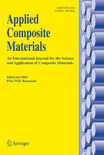
APPLIED COMPOSITE MATERIALS
Transforming Ideas into Composite RealitiesAPPLIED COMPOSITE MATERIALS is a leading peer-reviewed journal published by Springer, dedicated to advancing the field of composite materials and their applications. With an ISSN of 0929-189X and E-ISSN of 1573-4897, this journal serves as an essential resource for researchers, professionals, and students interested in the innovative approaches and technological progress within the realm of composite materials. Based in the Netherlands, APPLIED COMPOSITE MATERIALS is recognized in the 2023 Scopus rankings, holding a prestigious Q2 quartile position in the Ceramics and Composites category, further exemplifying its impact with a rank of #59 out of 127 in materials science. The journal has been at the forefront of composite material research since its inception in 1994 and continues to offer open access to high-quality publications that address both theoretical and practical applications in the field. Researchers can count on this journal to disseminate cutting-edge findings and foster collaboration, driving innovation in composite material development.
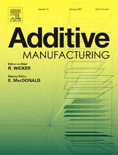
Additive Manufacturing
Pioneering Research in Additive Manufacturing ExcellenceAdditive Manufacturing is a leading international journal published by ELSEVIER, dedicated to the advancements and transformative applications of additive manufacturing technologies across various disciplines. Since its inception in 2014, it has emerged as a pivotal resource in the fields of Biomedical Engineering, Industrial and Manufacturing Engineering, and Materials Science, with an impressive impact factor and ranking in the Q1 quartile across multiple categories as of 2023. The journal serves as a platform for cutting-edge research, state-of-the-art techniques, and novel applications in additive manufacturing, making it essential reading for researchers, industry professionals, and students alike. By fostering a comprehensive understanding of the challenges and innovations within the field, Additive Manufacturing plays a crucial role in shaping the future of production technologies. With a strong readership and rigorous peer-review process, this journal ensures that its contributions remain at the forefront of manufacturing research and development.
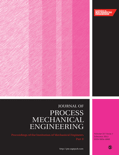
PROCEEDINGS OF THE INSTITUTION OF MECHANICAL ENGINEERS PART E-JOURNAL OF PROCESS MECHANICAL ENGINEERING
Unveiling Insights for Tomorrow’s Mechanical ChallengesPROCEEDINGS OF THE INSTITUTION OF MECHANICAL ENGINEERS PART E - JOURNAL OF PROCESS MECHANICAL ENGINEERING is a leading peer-reviewed journal published by SAGE Publications Ltd, dedicated to the field of mechanical and process engineering. With a strong emphasis on the latest research and developments, this journal covers a wide range of topics that are vital for advancing the understanding and application of mechanical processes in engineering. Holding an impressive Q2 ranking in both Industrial and Manufacturing Engineering and Mechanical Engineering categories for 2023, it promotes high-quality scholarly articles that are instrumental for researchers and professionals alike. The journal's historical range from 1989 to 2024 showcases its commitment to consistently delivering vital insights to the engineering community, making it an essential resource for those seeking to stay at the forefront of the discipline. Although it does not currently offer open access options, the impact factor and relevance of the journal ensure that it remains a valuable platform for disseminating significant findings in the field.